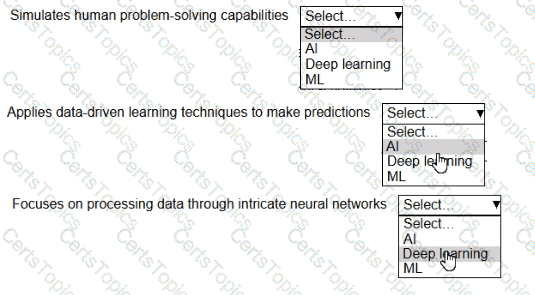A company has documents that are missing some words because of a database error. The company wants to build an ML model that can suggest potential words to fill in the missing text.
Which type of model meets this requirement?
A company wants to build a lead prioritization application for its employees to contact potential customers. The application must give employees the ability to view and adjust the weights assigned to different variables in the model based on domain knowledge and expertise.
Which ML model type meets these requirements?
A company wants to use AI to protect its application from threats. The AI solution needs to check if an IP address is from a suspicious source.
HOTSPOT
Select the correct AI term from the following list for each statement. Each AI term should be selected one time. (Select THREE.)
• AI
• Deep learning
• ML
